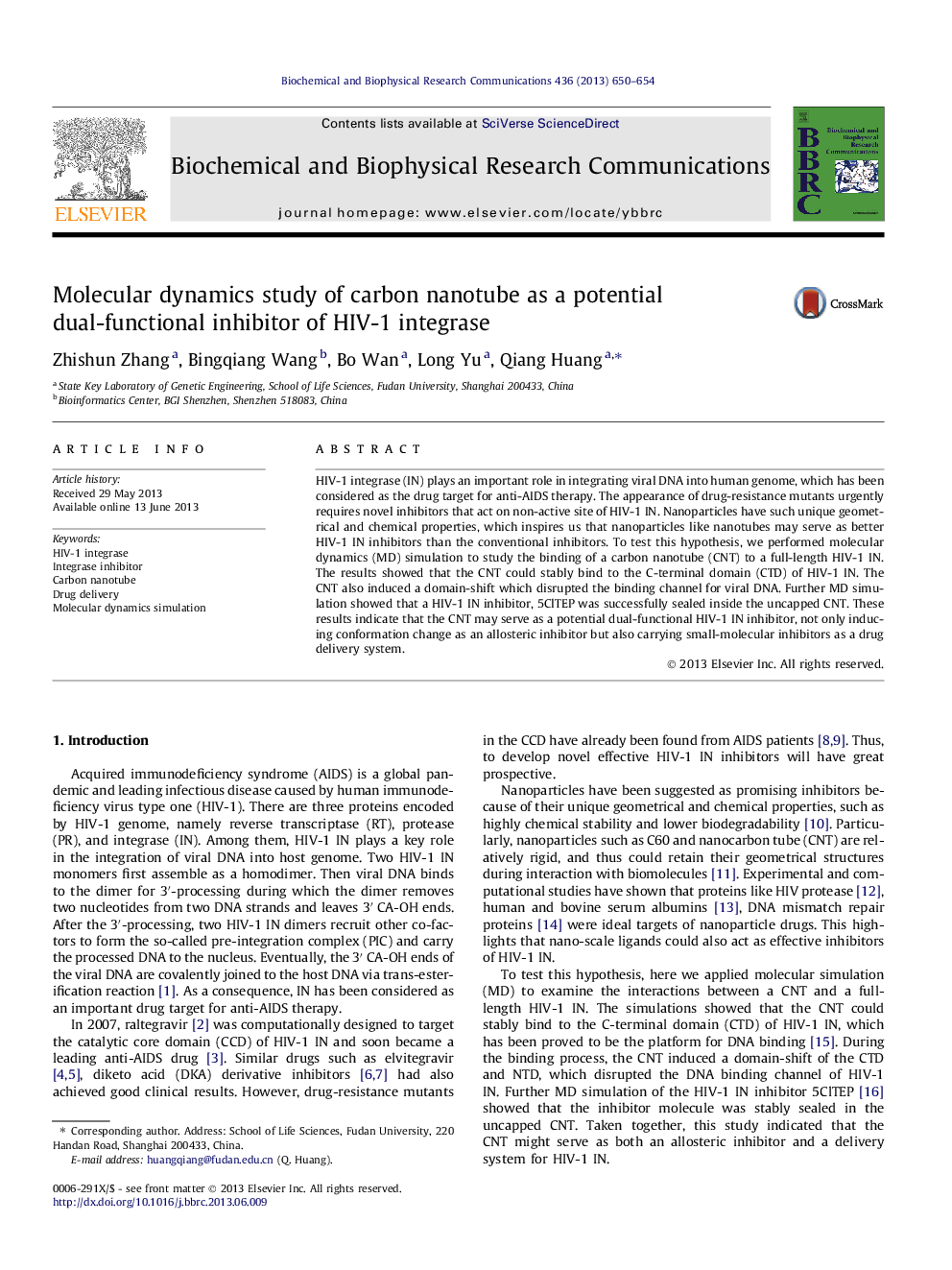| Article ID | Journal | Published Year | Pages | File Type |
|---|---|---|---|---|
| 10758322 | Biochemical and Biophysical Research Communications | 2013 | 5 Pages |
Abstract
HIV-1 integrase (IN) plays an important role in integrating viral DNA into human genome, which has been considered as the drug target for anti-AIDS therapy. The appearance of drug-resistance mutants urgently requires novel inhibitors that act on non-active site of HIV-1 IN. Nanoparticles have such unique geometrical and chemical properties, which inspires us that nanoparticles like nanotubes may serve as better HIV-1 IN inhibitors than the conventional inhibitors. To test this hypothesis, we performed molecular dynamics (MD) simulation to study the binding of a carbon nanotube (CNT) to a full-length HIV-1 IN. The results showed that the CNT could stably bind to the C-terminal domain (CTD) of HIV-1 IN. The CNT also induced a domain-shift which disrupted the binding channel for viral DNA. Further MD simulation showed that a HIV-1 IN inhibitor, 5ClTEP was successfully sealed inside the uncapped CNT. These results indicate that the CNT may serve as a potential dual-functional HIV-1 IN inhibitor, not only inducing conformation change as an allosteric inhibitor but also carrying small-molecular inhibitors as a drug delivery system.
Keywords
Related Topics
Life Sciences
Biochemistry, Genetics and Molecular Biology
Biochemistry
Authors
Zhishun Zhang, Bingqiang Wang, Bo Wan, Long Yu, Qiang Huang,
